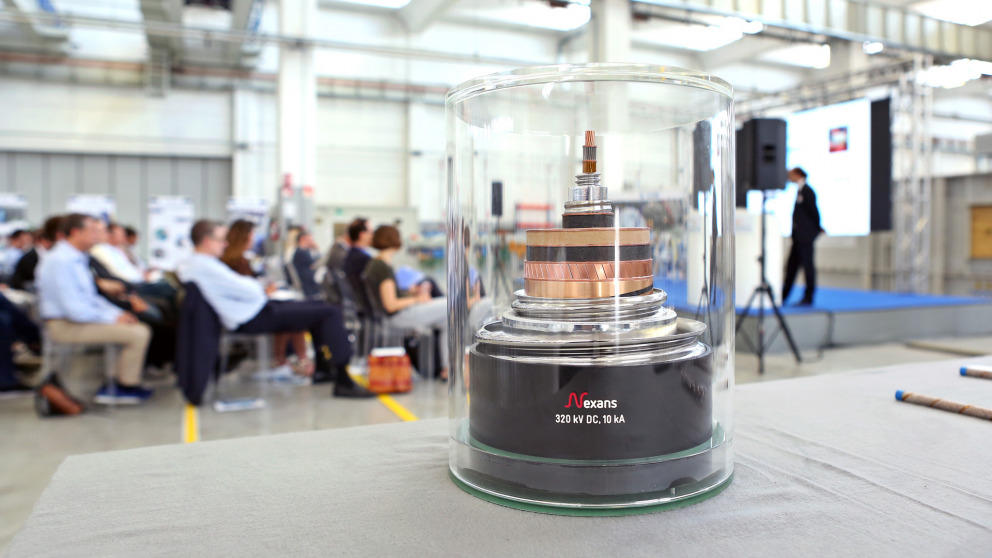Superconducting Cable Sets New Records for Power Transmission
16.07.2018
Together with transmission system operators, partners from industry and science presented the results of ground-breaking research on a superconducting cable system at an international workshop on 5 July in La Spezia, Italy.

The workshop brought together 65 participants and was organised by the Institute for Advanced Sustainability Studies (IASS), cable manufacturer Nexans, and the Italian company ASG Superconductors.
Superconducting cables can help to integrate large amounts of renewable energy into the electricity grids, making energy transport more efficient and more environmentally friendly.
“The cable system we have developed sets new records in the field of superconducting technologies. The wires, which are made of magnesium diboride, are able to carry 500 times more electricity than copper wires. Our cable can transport up to 3.2 GW of electric power, and thanks to its small size, it has a reduced environmental impact,” said Adela Marian, Scientific Project Leader at the IASS.
In collaboration with Nexans, the IASS has coordinated the efforts of ten European partners to design an innovative cable system including high-voltage insulation and terminations. The breakthroughs were achieved in Demonstration No.5 of Best Paths, the largest energy-related research project funded by the European Union in the last decade.
Christian-Eric Bruzek, Senior Project Manager at Nexans, said “We have for the first time designed a high-voltage superconducting cable system capable of operating in direct current. All other existing projects only deal with alternating current. The advantages of direct current transmission in terms of efficiency are especially clear over long distances. The most challenging task is to manage the connection between the cable and the existing grid using high-voltage terminations. This will set standards for the high-voltage grids of the future.”
But what will the future grid look like, and what role will superconducting power lines play in it? During a panel discussion the industry partners expressed their confidence that superconducting cables will become standard grid components in just a few years. The transmission system operators, including the French Réseau de Transport d'Électricité and the Italian Terna, were more cautious and called for the implementation of customised projects.
Jean-Yves Astic, R&D Program Manager at Réseau de Transport d'Électricité, said “To get transmission system operators on board for investing in superconducting links, we would need customised use cases ranging from 63 to 320 kV with details of the exact costs, practical system operation, as well as long-term maintenance.”
To support the widespread diffusion of this technology, the next step will be the development of testing guidelines for high-voltage direct current superconducting cables by a consortium of manufacturers and system operators to ensure safety and quality standards.
For more information:
www.bestpaths-project.eu/en/news-events
Here you can find the agenda, presentations, and photos of the workshop.
Save the date: To disseminate the project results, Best Paths will hold a final event in Brussels on 20 September 2018: “Renewing the EU Electricity Grid: the Best Paths towards Energy Transition”